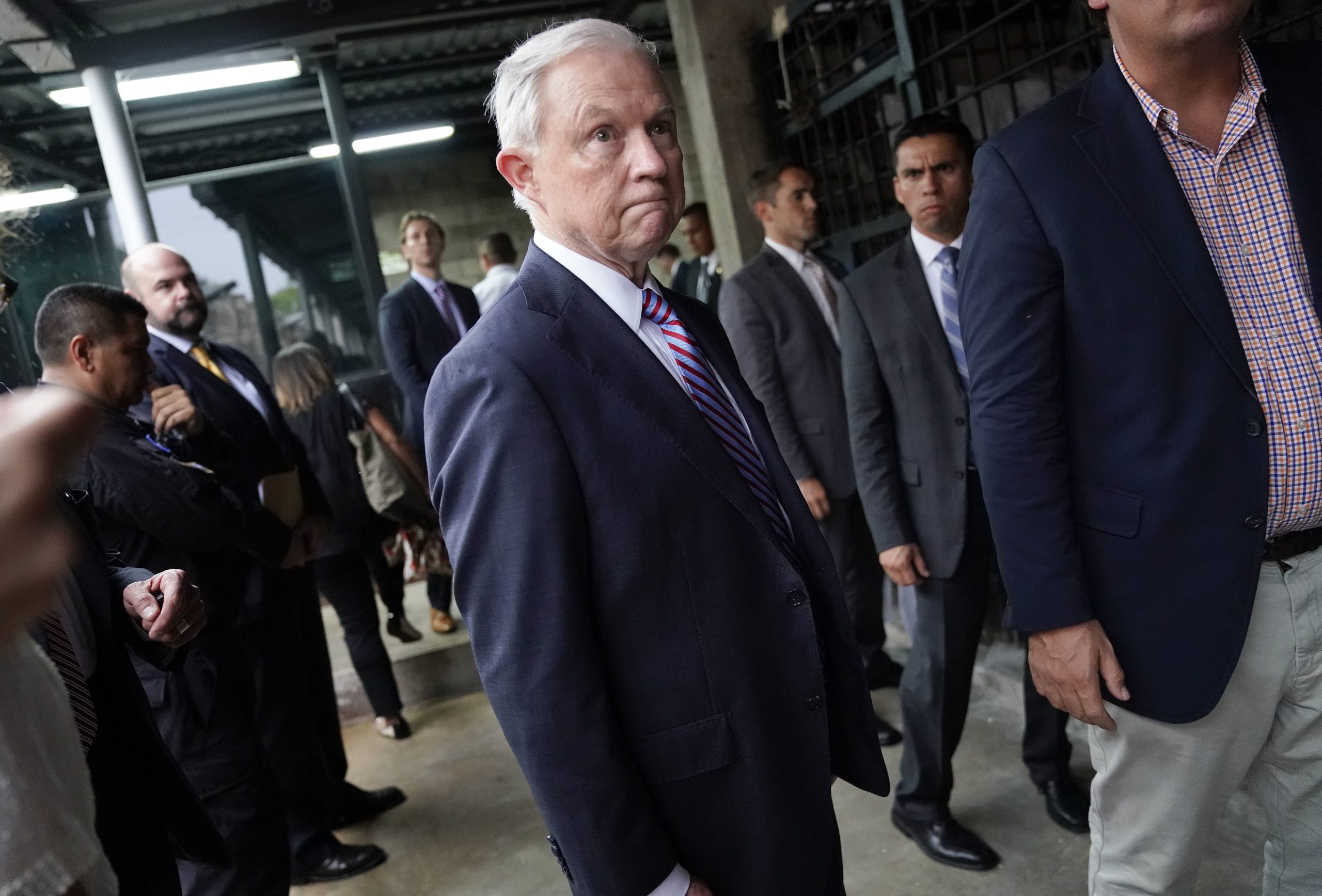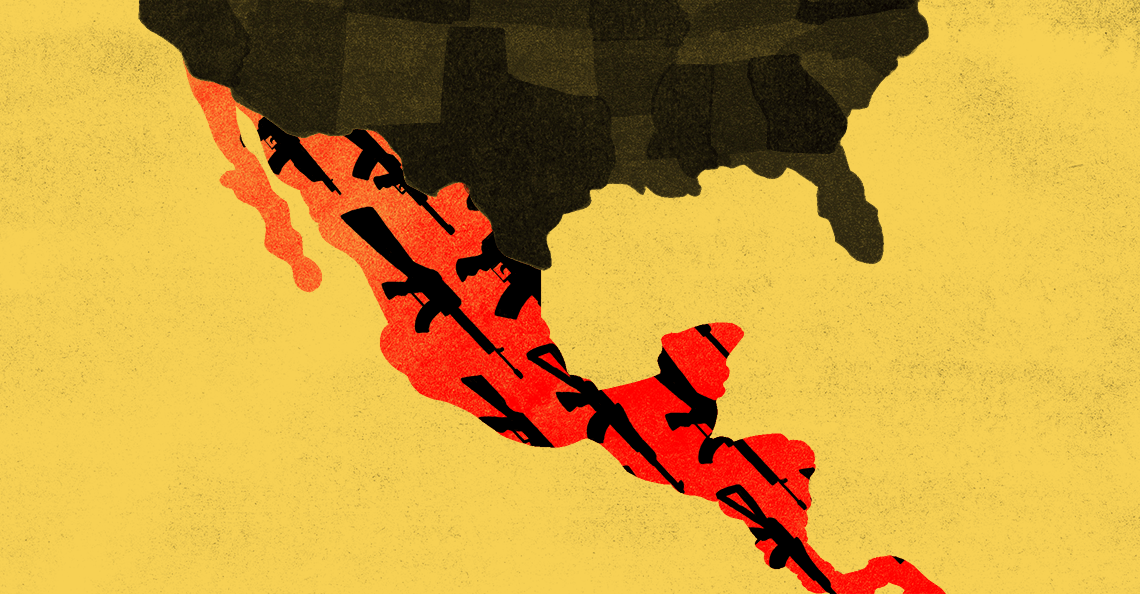Attorney General Jeff Sessions is ending the week with a visit to the tiny Central American nation of El Salvador, a perennial contender for the most violent country on earth. Sessions is there to discuss gang violence. The country is home to the fearsome MS-13 gang, which emerged in the 1980s and over decades has expanded its reach to nearly the entire United States.
The danger posed by MS-13 may be one of the few issues where Sessions and President Donald Trump are presently in sync: As Sessions meets with his counterparts abroad, Trump spent part of Friday talking about the gang on Long Island, New York, where it has been implicated in grisly murders.n
For Trump and his cabinet, MS-13 has become a primary example of why the United States needs to impose harsh immigration and criminal justice policies. But their prescription has lacked an essential element: a solution to the flow of smuggled American guns that arm El Salvadoran criminals and cartels throughout Latin America.
In response to a request for comment on whether the attorney general would address the trafficking of American guns to El Salvador on his trip, the Department of Justice provided a press release touting an increase in domestic prosecutions of illegal gun possession, as well as a transcripts of a speech Sessions he gave today. In remarks delivered to graduates of a law enforcement academy in the capital city San Salvador, Sessions said that MS-13 “threatens the lives and well-being of each and every family anywhere they exist,” but failed to mention the weapons that make the organization such a threat.
It is the second time his office has avoided directly commenting on the issue. When Sessions hosted the attorneys general of El Salvador, Honduras, and Guatemala back in April, a DOJ spokesman declined to say whether gun-running was discussed during the meeting.
According to the Bureau of Alcohol, Tobacco, Firearms and Explosives, 48 percent of the weapons recovered at crime scenes in El Salvador during 2015 and submitted to the agency for tracing came from the United States. That would make America the single largest source of guns in the country.

That confirms findings by El Salvador’s own law enforcement agencies. In 2013, authorities performed traces on more than 30,000 weapons and found that a majority came from the United States.
Insight Crime, a website covering public safety in Latin America, reported that analysis showed: “a high percentage of modern weapons in the region’s most violent countries originate in the United States, suggesting as more civil-war era weapons are decommissioned, many will be replaced by arms- trafficking networks from north of the border.”
The vast consumer gun market in the United States provides a ready source of guns for smugglers. Since 2011, the ATF has required gun dealers in states along the southwestern border to report sales of multiple rifles and shotguns, considered a sign of trafficking. But the rule governing the bulk sale of rifles, the one tool specifically designed to curb trafficking from the United States, may soon be undone by the National Rifle Association’s allies in Congress. The House of Representatives is currently considering a spending bill that would bar the ATF from enforcing the rule.

